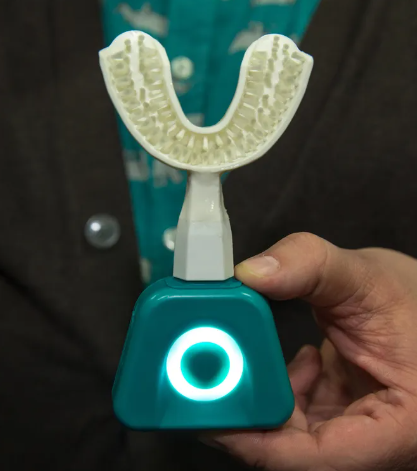How does your TV remote work?
Hey friends, Happy Wednesday!
Let’s look at how a TV remote works this week. I aim to write my newsletter issues in a way one can follow them while traveling on a bus, having a coffee, waiting for food, etc. Let's jump in!
How it works: 15-second answer
When a button is pressed, your TV remote emits infrared light pulses from an LED. Each button press sends a unique series of light pulses (using light ON and OFF), similar to Morse code. Upon reaching the TV's sensor, these light pulses cause the sensor to generate a unique electrical signal. The TV's chip decodes this signal, mapping it into commands like increasing volume, etc. which are then executed.
Shoutout!
Thank you Lorraine and friends for staying curious, asking questions, and giving your feedback. I met them in person last weekend near my place.
How does a TV remote work?
Step 1: Remote commanding the TV
Your TV remote is a smart flashlight. Yes!
When you press any button on a TV remote, a quick series of infrared light flashes are sent from the small LED mounted at the front of the remote. They travel at the speed of light across your room.
Figure 1: TV remote with a infrared LED light at the front
Every button press sends a unique pattern of light series using ON and OFF. For example, a volume up button in a remote can be of the pattern “01011” which means the TV remote turns on and off the LED light in this sequence: OFF-ON-OFF-ON-ON when the volume up button is pressed.
Likewise, every button press has a unique pattern, similar to how Morse codes work.
Figure 2: A unique series of infrared LED light patterns using ON and OFF are sent by your TV remote for each button press (Exaggerated with visible light from a flashlight in this gif for explanation)
Now, we have sent the command from the remote. But how does your TV process all this?
Step 2: TV responding to the remote's command
A definition before we proceed. Every TV has a photodetector sensor placed at its bottom.
When the series of light flashes from the remote hits the photodetector of the TV, it generates a unique electrical signal.
So using our example of volume up button press with OFF-ON-OFF-ON-ON infrared LED pattern, it causes the photodetector to generate a unique electrical signal. A chip inside the TV decodes this signal to find the pattern that it corresponds to.
Finally, it maps the pattern into a command that needs to be executed and performs it. It increases the volume by 1 in our example and sends an electrical signal to the speaker of the TV - to increase the amplitude of the sound generated.
This is how each of your TV remote button presses gets executed.
Try this at your home today!
Humans cannot see infrared lights with their naked eyes. But if you point your phone camera at the LED on the remote and press a button on the TV remote, you can see the light flashing.
Note: You cannot decode and observe the unique pattern as the series of light pulses going ON and OFF is executed very quickly.
Question of the week
Just a thought. Naturally, the human body emits infrared radiation as well. So can we program the TV to change channels simply based on our presence? Reply to this email with your thoughts, and we’ll discuss.
Gadget of the week
Figure 3: Y-shaped toothbrush
Y-brush electric toothbrush: This Y-shaped toothbrush can brush all your teeth in a jaw simultaneously. They claim it takes only 10 seconds to brush the teeth in one jaw effectively. All you do is bite down and press the button. I haven’t tried this out personally, but it sounds cool.
That's all folks. Thank you for reading!
Have an amazing rest of the week, and take care!
Until next to next Wednesday,
Chendur



